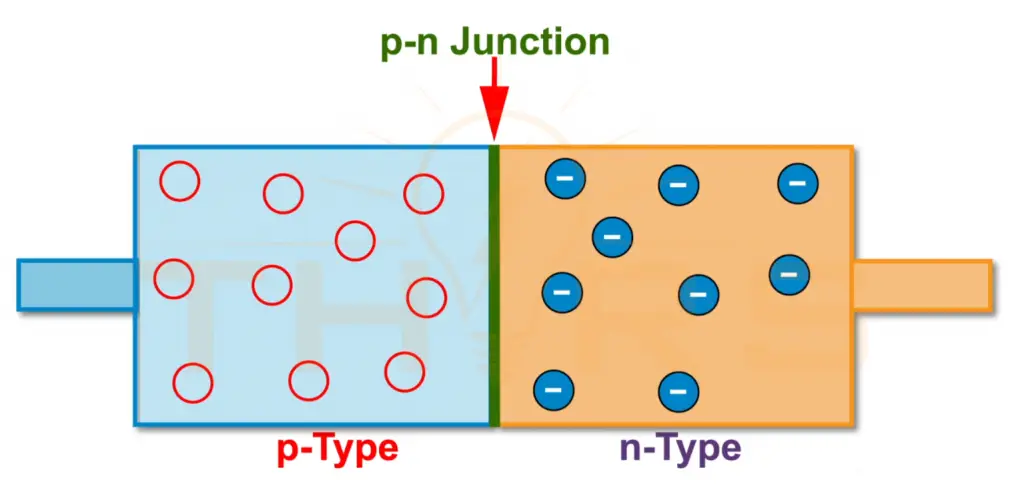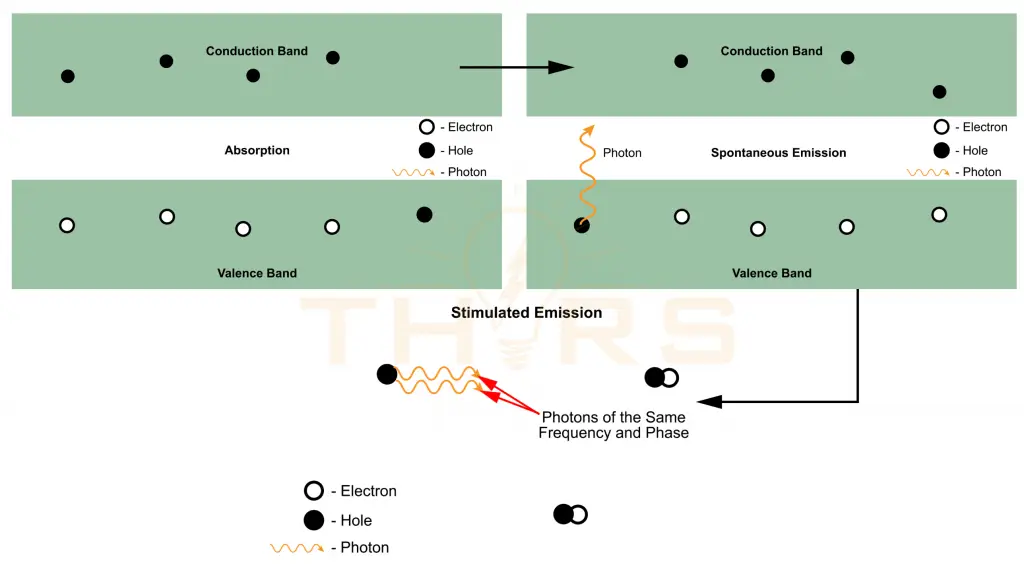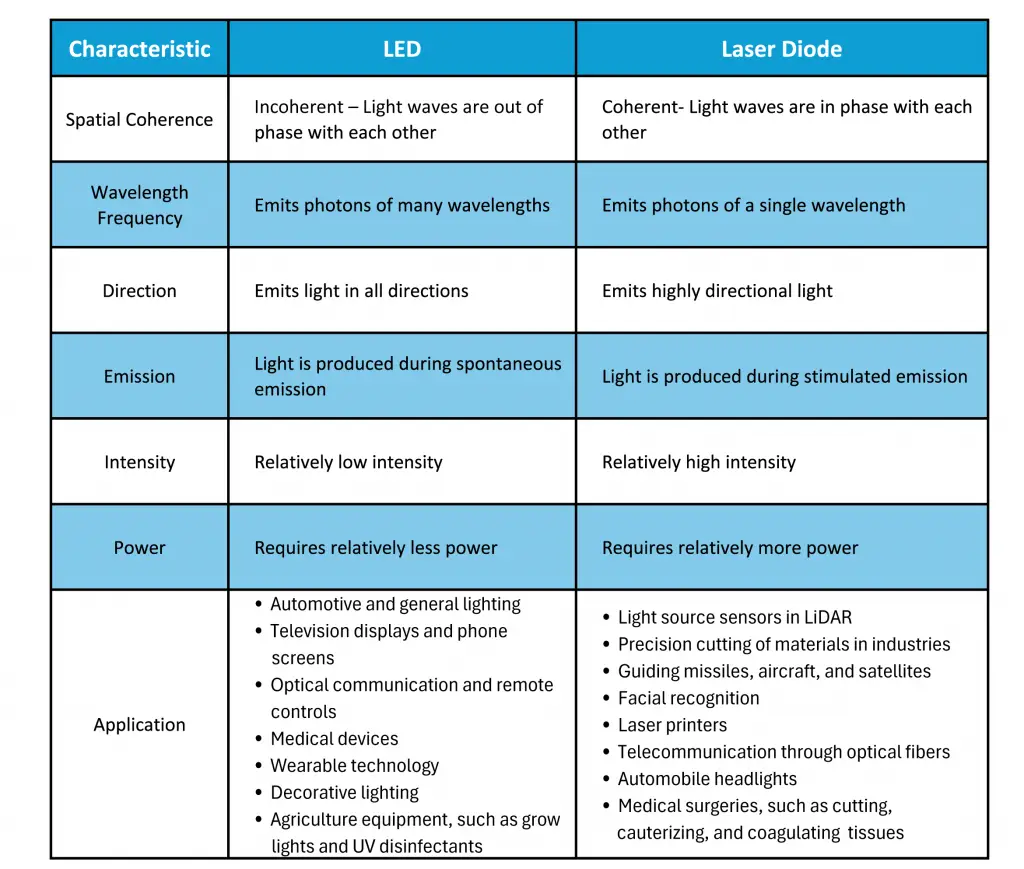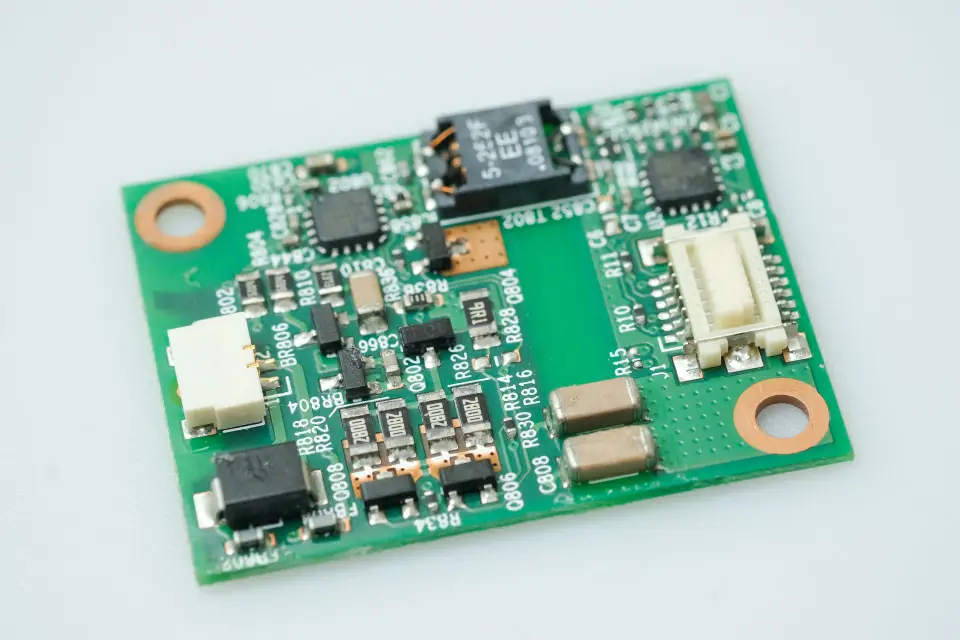Light Emitting Diodes (LEDs) and laser diodes are two of the most common types of diodes, which are semiconductor devices known for their ability to allow current to flow in only one direction .
Both LEDs and laser diodes have slightly different working principles and play a crucial role in modern electronics, with their applications spanning industries from consumer electronics to telecommunications and medical devices. Laser diodes are an advanced version of the LED and are gaining popularity in LiDAR technologies used in autonomous vehicles.
Let’s start with a brief background on diodes and then explore the different working principles of LEDs and laser diodes.
What is a diode?
A diode is a semiconductor device that allows current to flow in one direction only. Diodes are made from various materials. Diodes that are made from germanium or silicon material are commonly referred to as junction diodes. Junction diodes have a p-type layer, which has more positively charged holes, and an n-type layer, which has more negatively charged electrons, that are combined to form a p-n junction. At the p-n junction, the holes attract the electrons, which move toward the p-type layer. This creates a lack of free electrons and holes at the p-n junction, creating a depletion layer. When forward biased, the depletion layer reduces allowing electrons to flow from the n-type layer to the p-type layer conducting current. When reverse-biased, the depletion layer increases, blocking the flow of electrons and acting as an insulator.

What is an LED?
An LED is a diode that converts electrical energy into optical energy. When forward biased, the LED conducts. The forward current excites the electrons to move from the valence band to the conduction band, leaving holes in the valence band. This process is called absorption. The excited electrons return from the conduction band, which corresponds to the n-type layer, to combine with the holes in the valence band, which corresponds to the p-type layer. When the electrons and holes recombine in the active region, energy is released in the form of photons, or light energy. This process is called spontaneous emission. The emission of light when an electron and hole combine is called radiative recombination. The wavelength of the photon released is dependent on the bandgap, or the distance between the valence band and conduction band, of the materials used in the p-n junction. LEDs emit incoherent light.

What is a laser diode?
A laser diode, which is a term created from the acronym Light Amplification by Stimulated Emission of Radiation (LASER), is the most advanced version of an LED. Unlike traditional LEDs, a laser diode works on a different principle, converting electrical energy into optical energy to produce a high-intensity, monochromatic coherent light. A laser diode works by using the phenomenon of stimulated emission. Stimulated emission is the third additional process to the absorption and spontaneous emission in an LED.

In a laser diode, emitted photons are trapped within a cavity formed by two reflecting mirror surfaces, one of which is only partially reflective. These trapped photons stimulate excited electrons to recombine with holes even before their recombination time leading to a population inversion. Population inversion is a condition where the higher energy level becomes more populated than the lower energy level. This condition then results in simulated emission, a process where more photons in phase with the initial photons are released, amplifying the output. Once the concentration of photons exceeds a threshold, the photons escape through the partially reflecting mirror surface, resulting in a bright, monochromatic, and coherent light.
A Comparison between The Characteristics of LED and Laser Diode

The market for LEDs has skyrocketed due to their impressive capabilities. Are you interested in learning more about these remarkable electronic devices? The THORS Light Emitting Diode (LED) Basics course would be a good place to start. View our course introduction video below.


